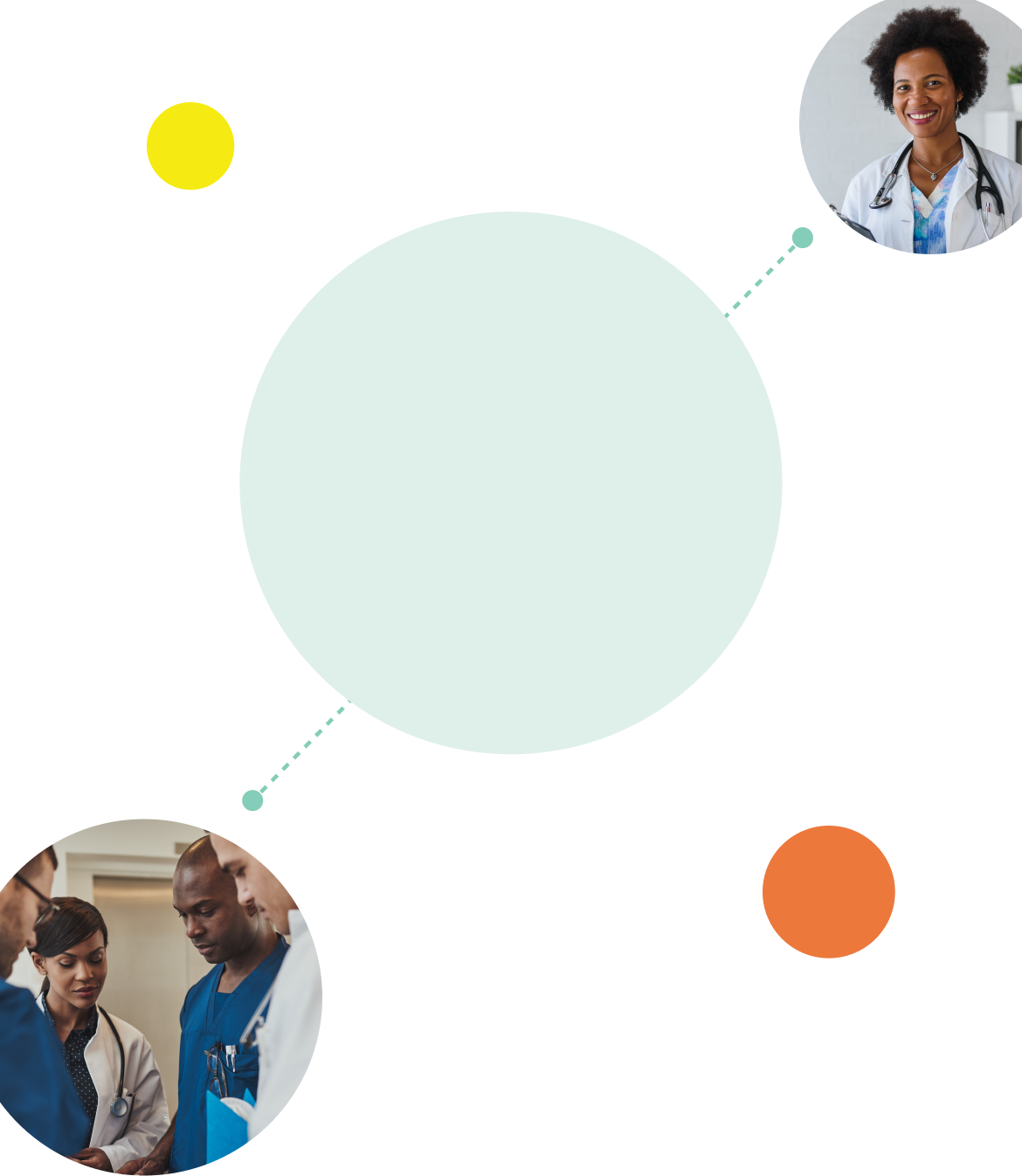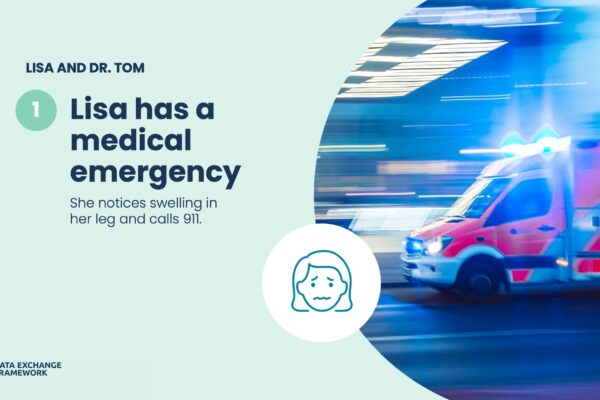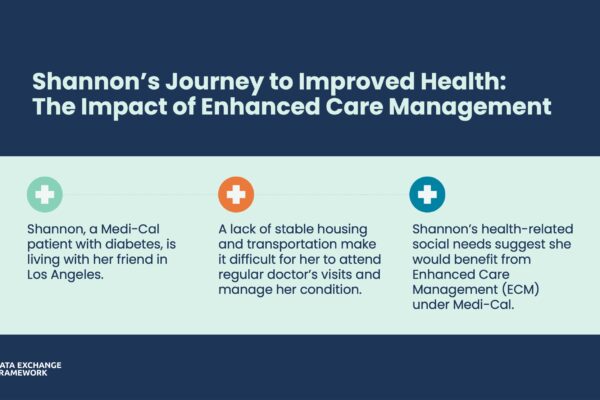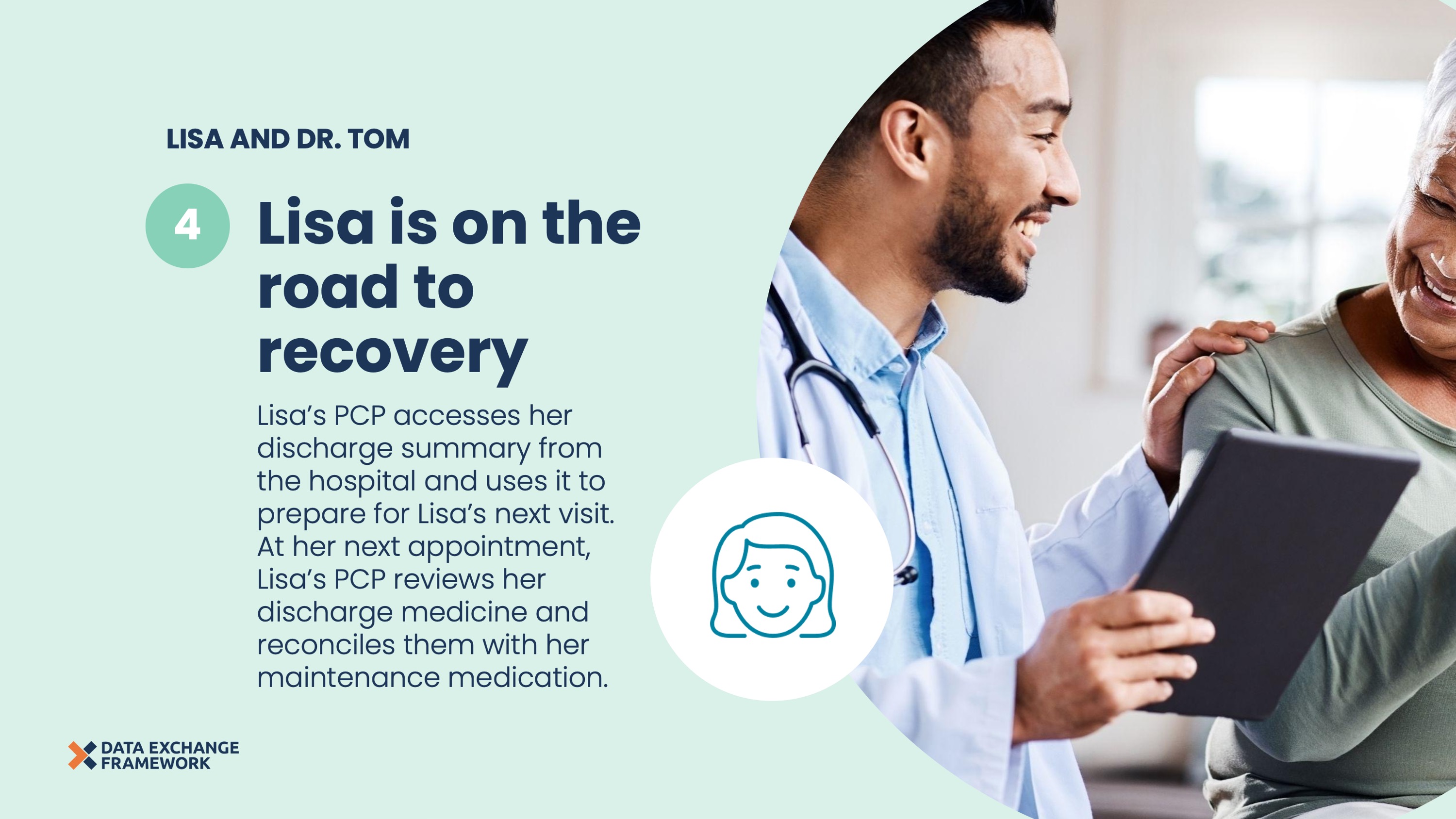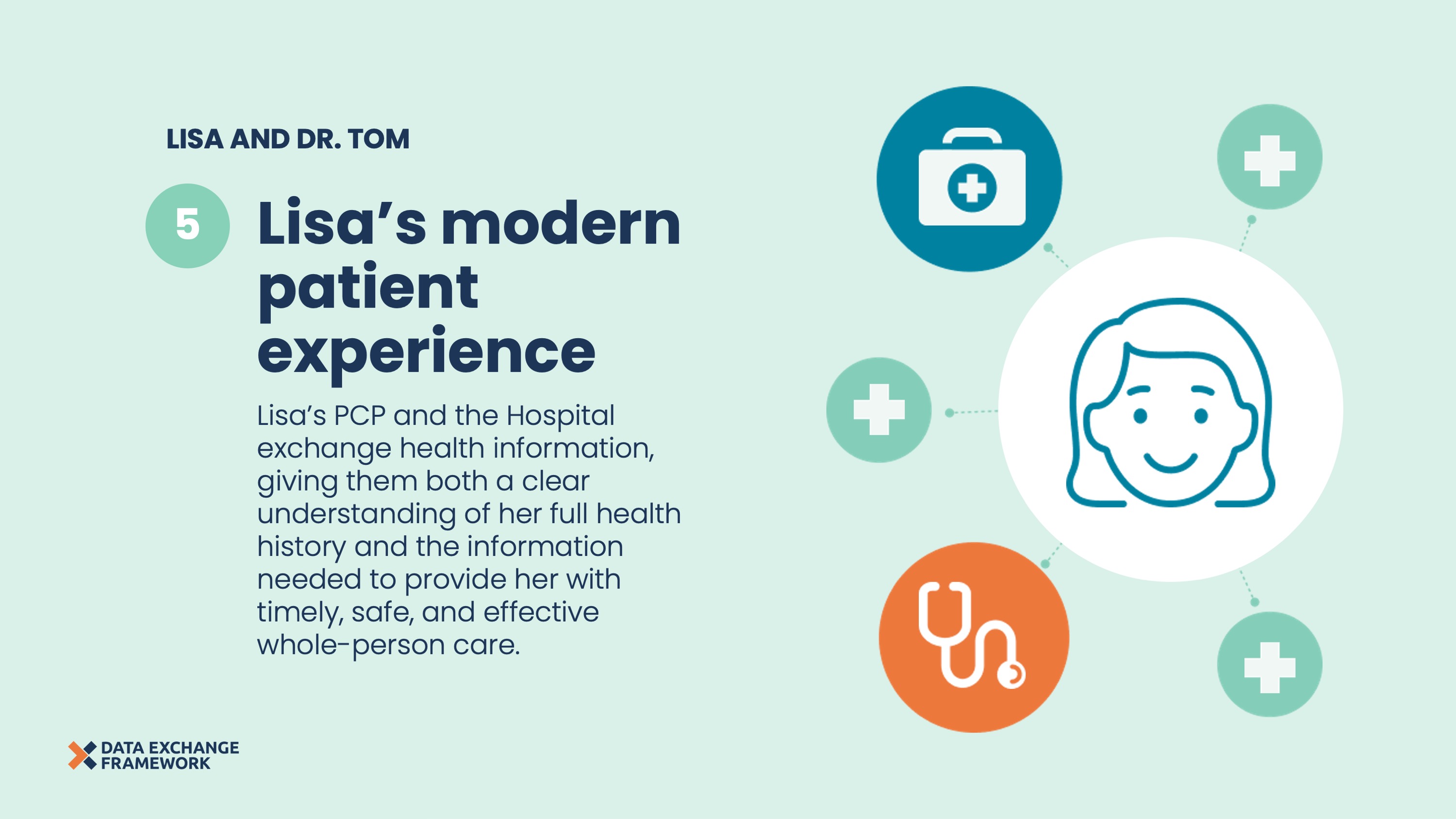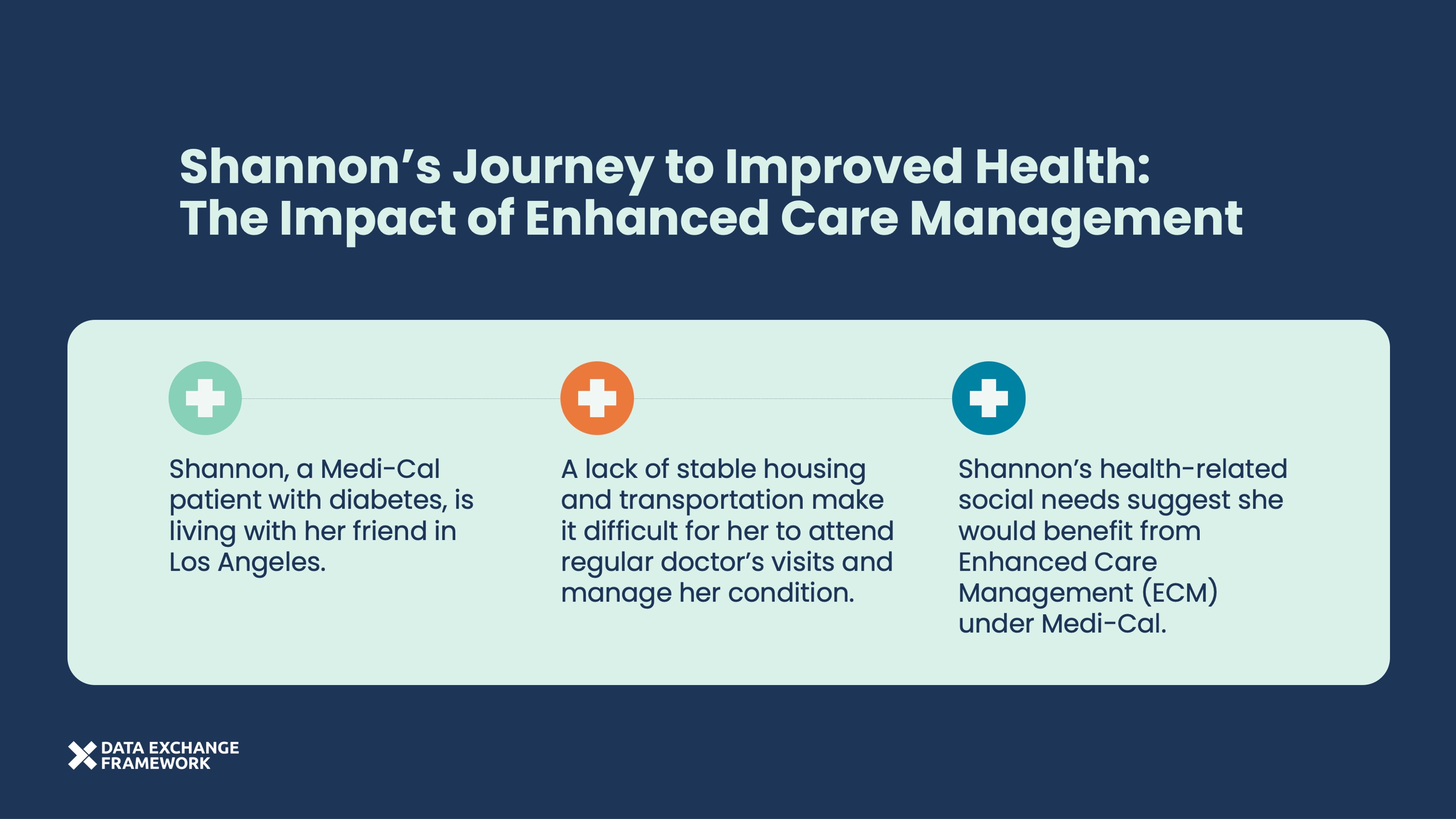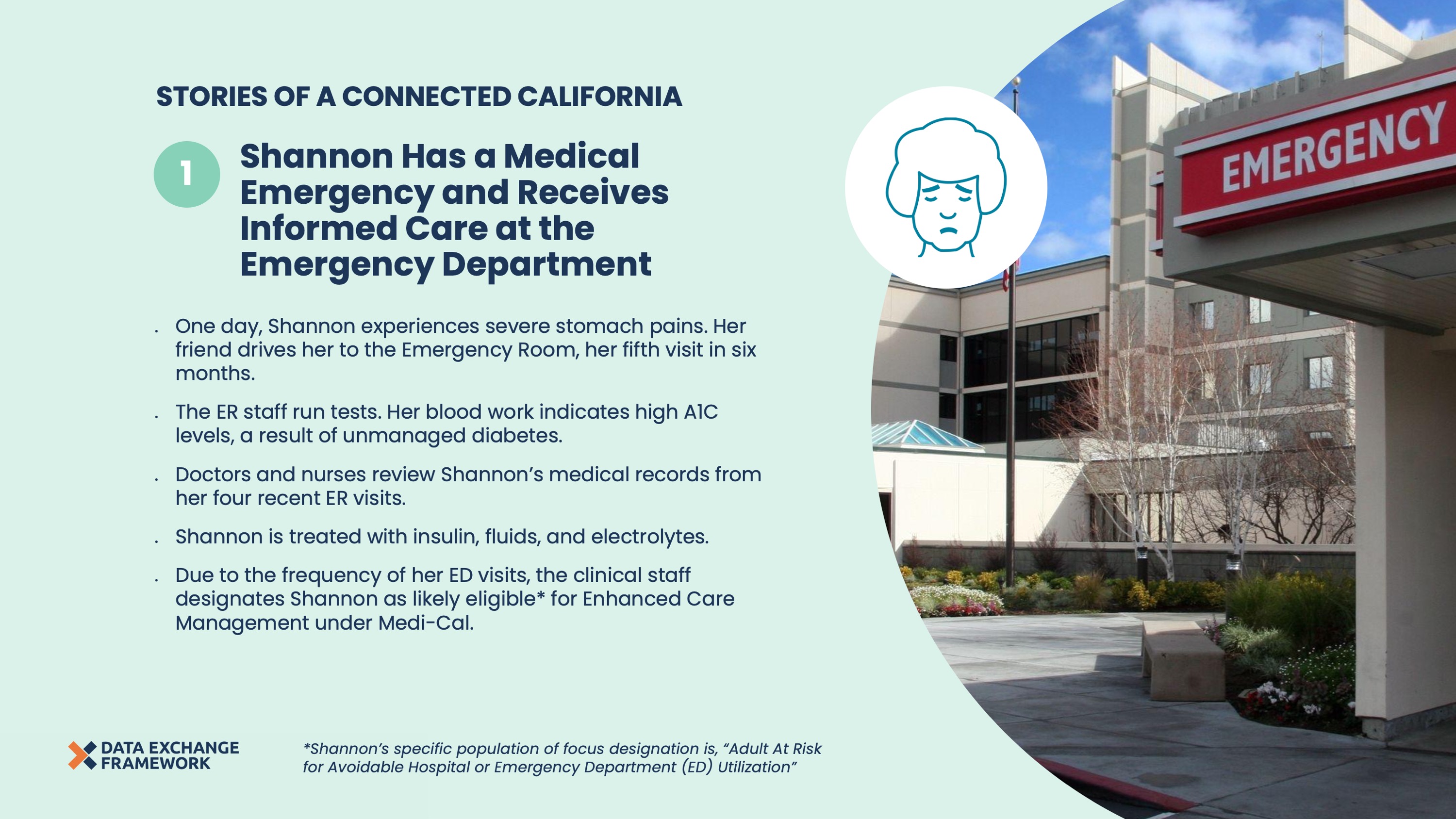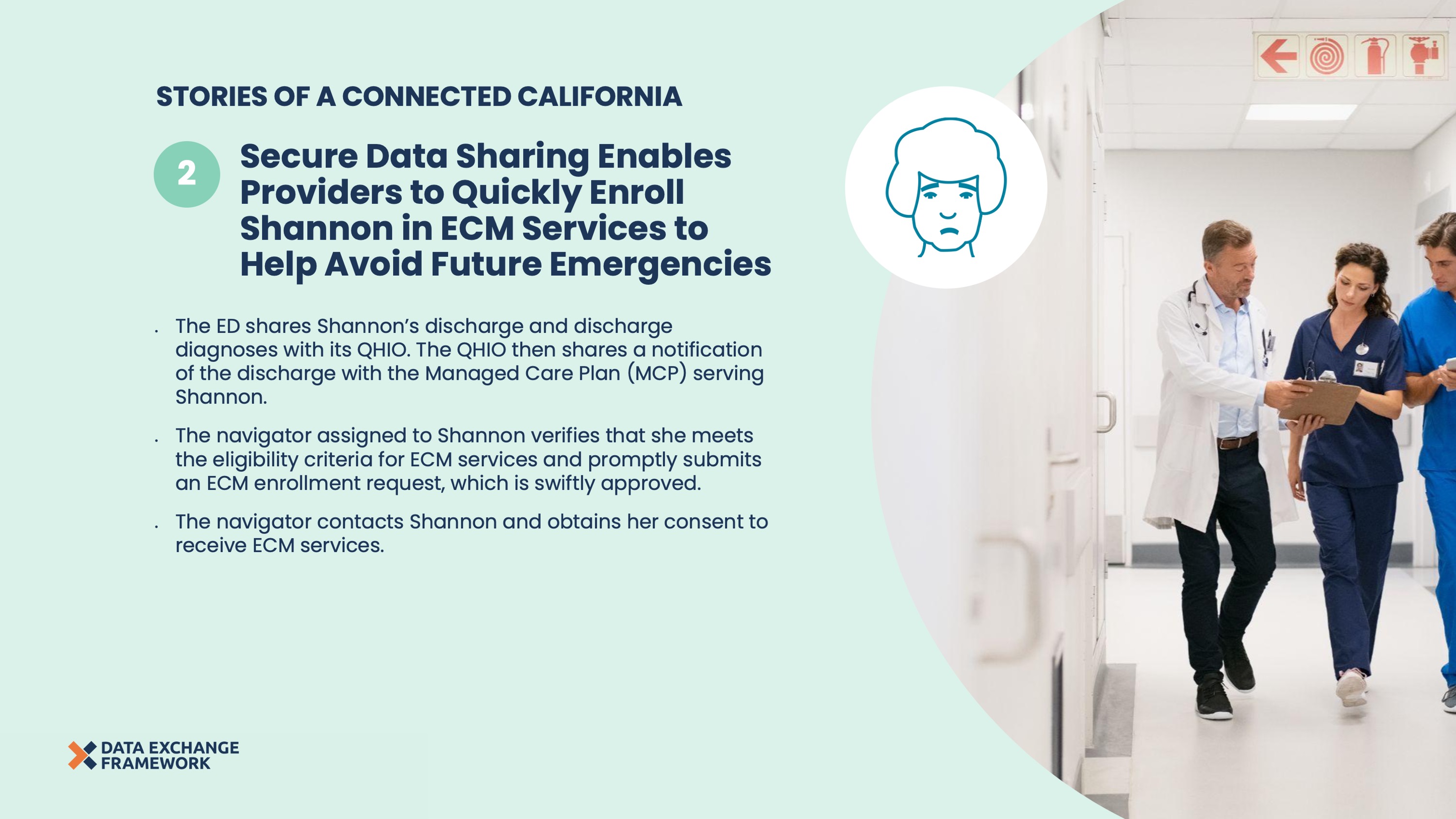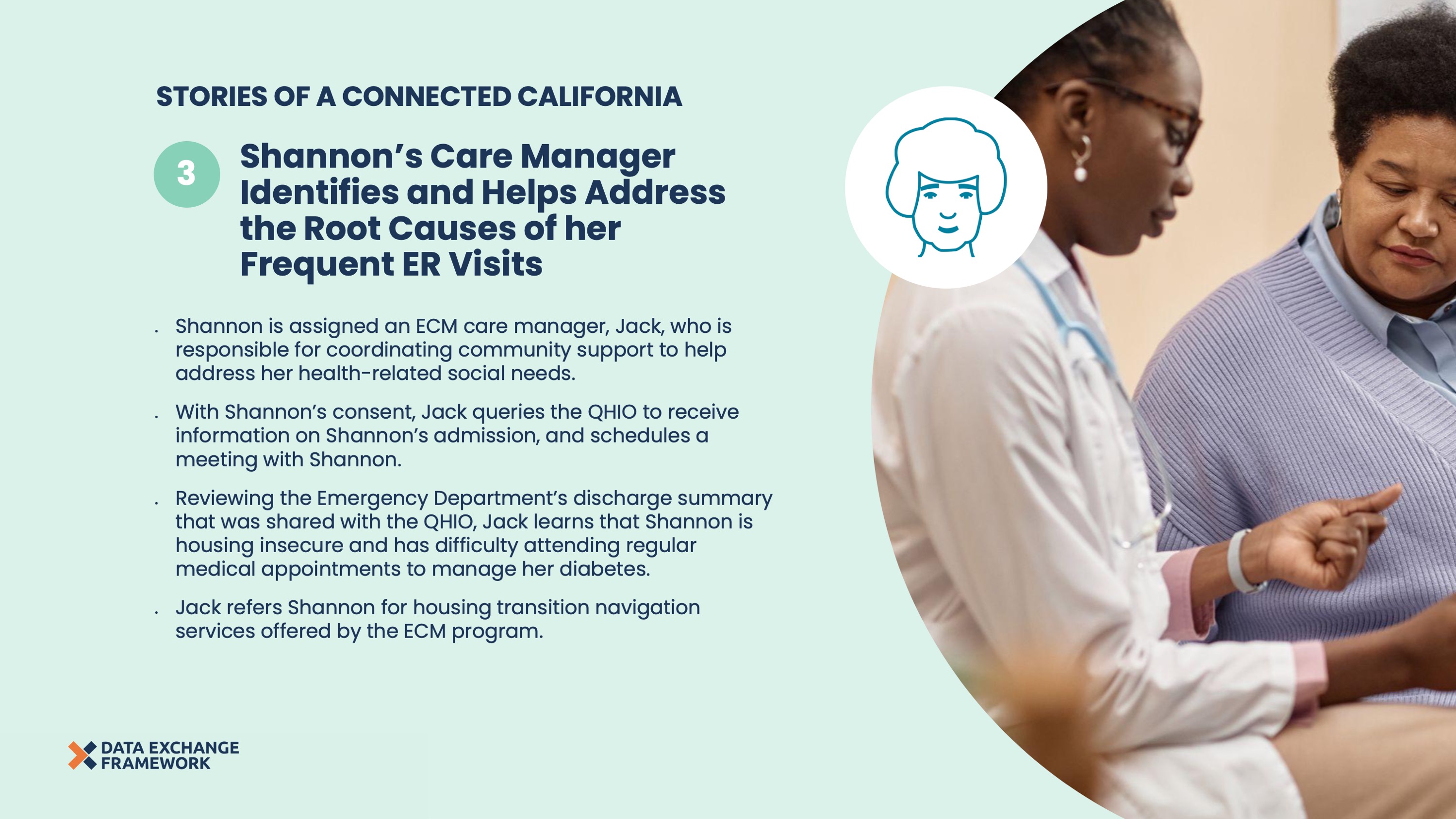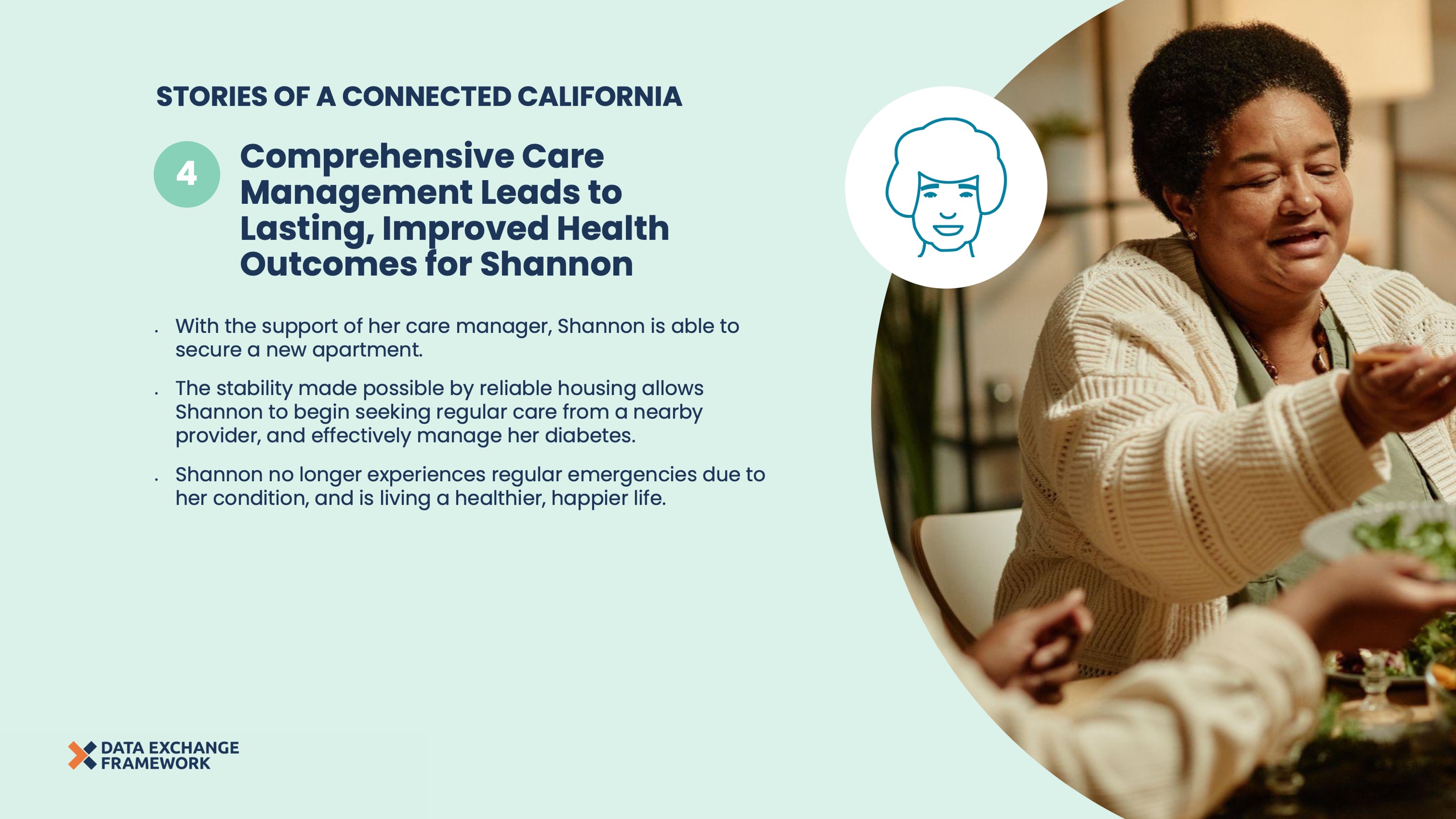The DxF enables health and social services entities to seamlessly share data with one another.
This timely, secure exchange improves the completeness of an individual’s records—empowering organizations with the information needed to provide the best possible care.
Today, thousands of health and social services providers across the state have proudly joined the DxF—helping lead our shared commitment to create a Healthy California for All.
Prospective Participants must complete a series of actions to join the DxF, including: signing the Data Sharing Agreement (DSA), maintaining certain technological capabilities, and declaring exchange readiness to other Participants.
Many health entities are required by law to join the DxF. Learn more

